From one end of the country to another, the spirit of St. Patrick has had a dramatic impact.
In 1916 Catholic Extension Society supported the newly formed Diocese of El Paso, Texas, along the U.S.-Mexico border, where they named their new cathedral, of all things, “St. Patrick,” It is 4,890 miles from Dublin to El Paso. How did this unlikely pairing happen?
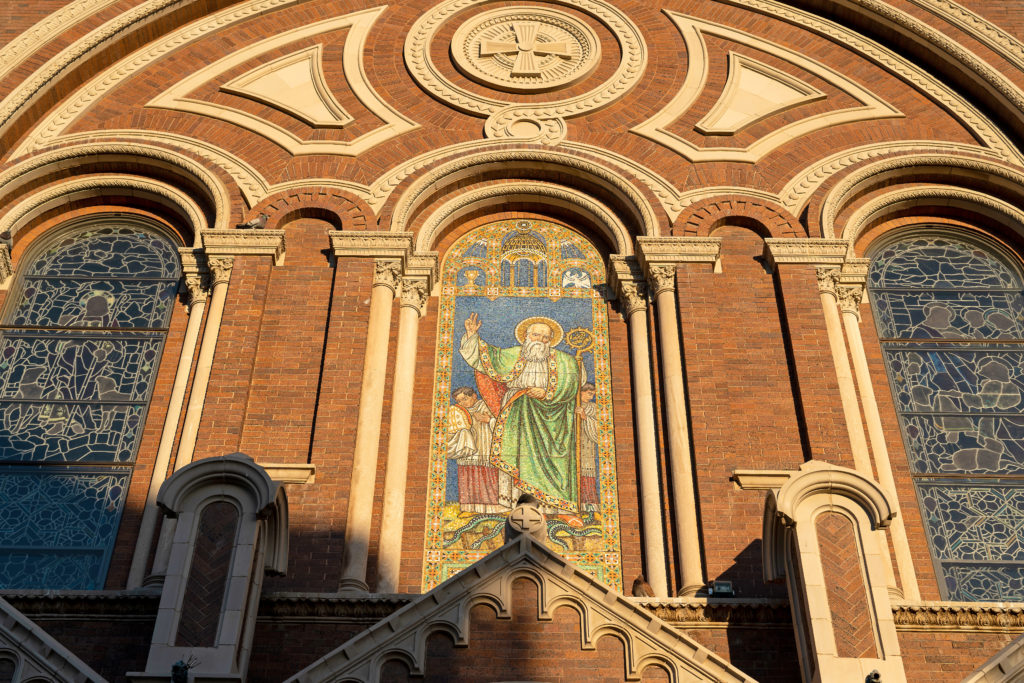
After all, the diocese at the time of its founding had been part of Mexico only 78 years earlier. Instead of crossing the border, the border, it is said, crossed them. Today, more than 80 percent of the city’s population claims Hispanic heritage. In spite of the centuries-long presence of Mexican American Catholics in the area, St. Patrick remains the patron of the cathedral. The building is now a historic landmark.
There are five other cathedrals named after St. Patrick in the United States. All but one are located on the East Coast, where the majority of Irish immigrants settled. In El Paso’s case, the new diocese had a fundraising competition to build its cathedral more than a century ago.
The first donors to come forward with $10,000 for the cathedral building project would be allowed to name its patron. A local donor, Delia Lane, was given that honor and outsourced the name selection to a group of Irish Catholic women, the ”Daughters of Erin,” of which she was a member. It is no surprise that they selected St. Patrick as the Cathedral’s patron.
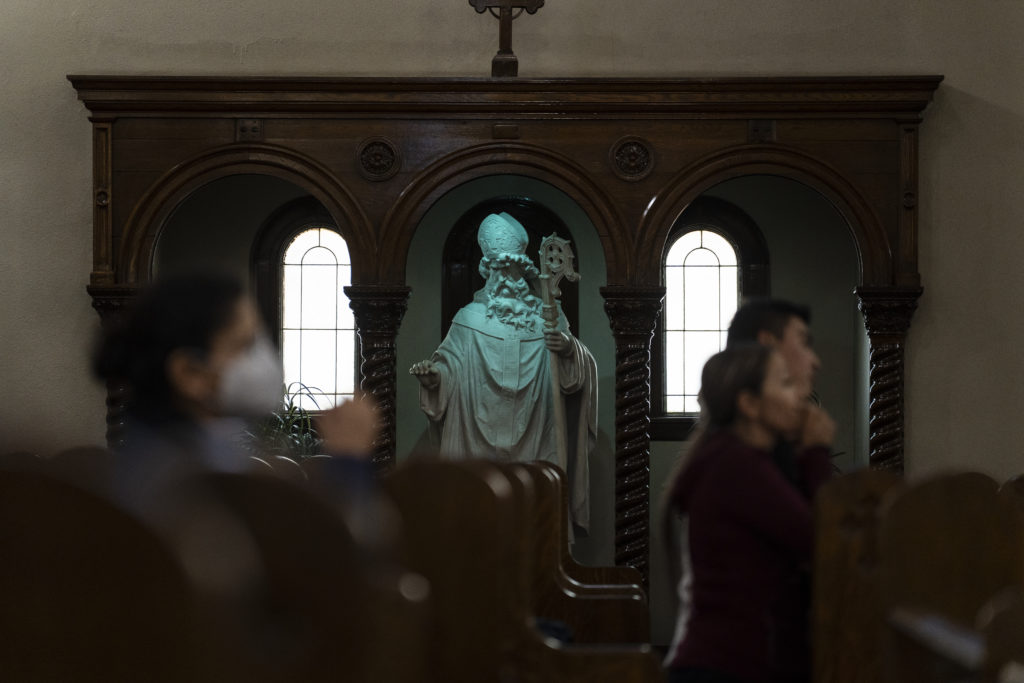
At the time, a sizeable population of Irish Catholics had found their way to El Paso through the booming mining, railroad and ranching industries in the same area. Not only was there land and opportunity, but the Irish of El Paso could escape some of the anti-Catholic, anti-Irish sentiments that were prominent on the East Coast.
El Paso’s St. Patrick Cathedral is located less than one mile from the present-day U.S.-Mexico border. Iconographic reminders of its unique location abound inside the cathedral, such as a memorial to San Pedro de Jesús Maldonado, a Mexican saint who was ordained a priest there in 1918 as a refugee seminarian in El Paso.
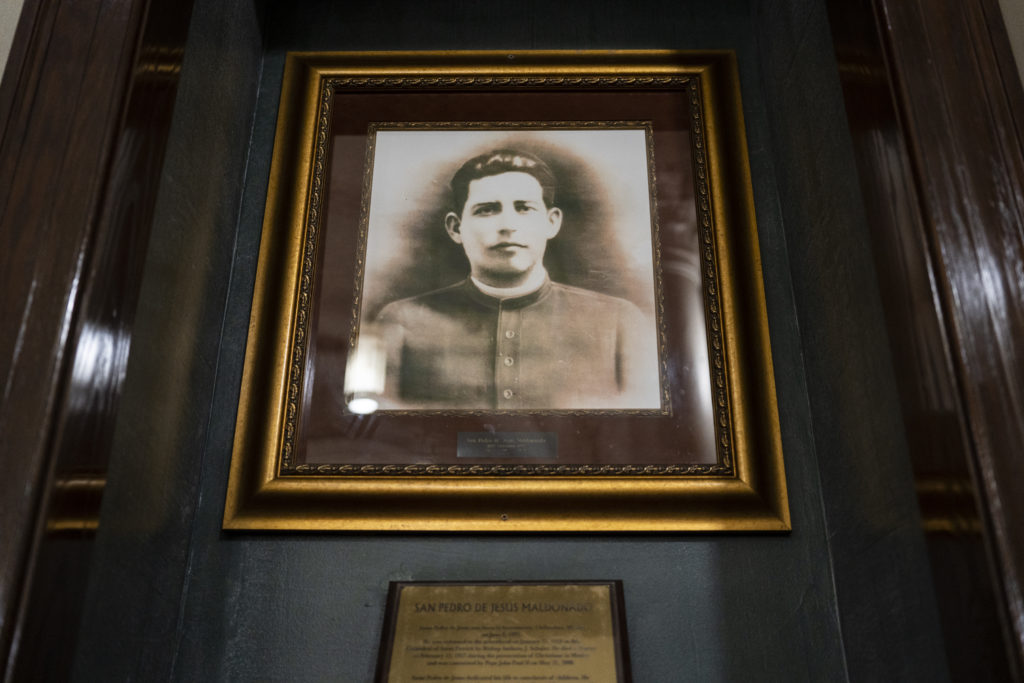
He returned to Mexico after ordination and was martyred- beaten to death by authorities for catechizing people. He was eventually canonized in 2000 by St. Pope John Paul II. San Pedro de Jesús Maldonado is just one of many 20th century saints from Mexico.
A Mexican American Patrick
Perhaps it was poetically appropriate that this largely Mexican American diocese with a cathedral named after Ireland’s patron would eventually become the seat of the first Mexican American bishop in the history of the United States. His name just so happened to be Patrick- Archbishop Patricio “Patrick” Flores. Much like his patron, Archbishop Flores became a legend in his own right.
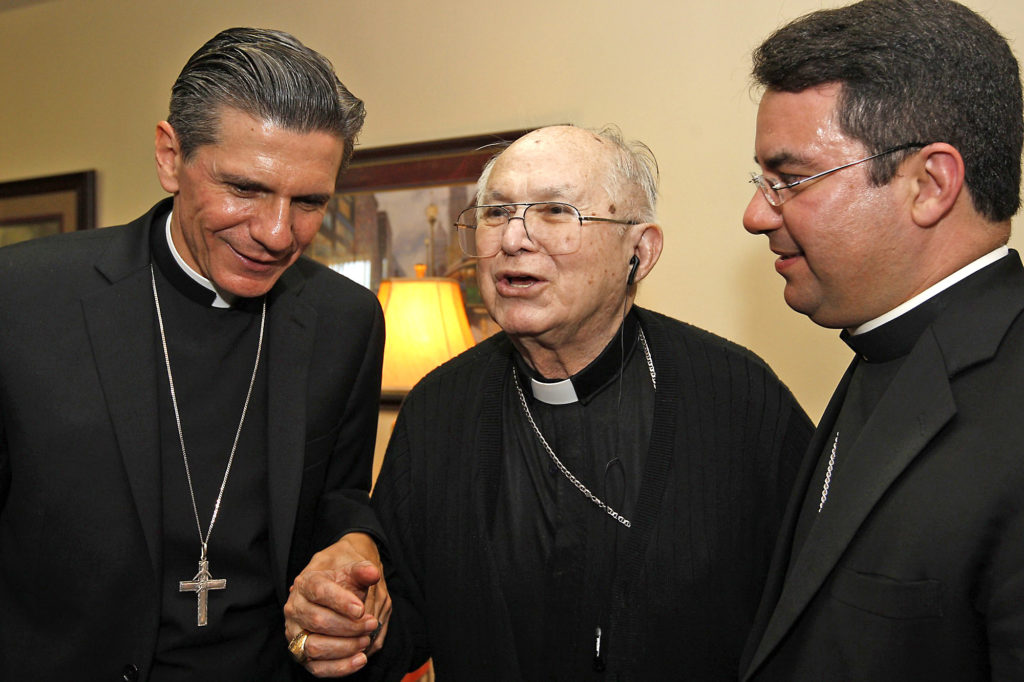
And true to St. Patrick’s pastoral style, Archbishop Flores gravitated toward the peripheries of society. After serving as the bishop of El Paso, he moved on to San Antonio, Texas. There he became archbishop, earning his affectionate moniker the “People’s Archbishop.”
He launched local and national movements to advocate for the rights of Mexican Americans. Catholic Extension Society supported many of these initiatives in both the Diocese of El Paso and the Archdiocese of San Antonio, including PADRES, an association of priests dedicated to building faith, educational opportunities, and social change among marginalized Latinos.
According to legend, St. Patrick used the simple shamrock to explain the mystery of the Trinity. In that same spirit, Archbishop Flores found ways to reach people’s hearts through rich symbols, simple gestures and loving words.
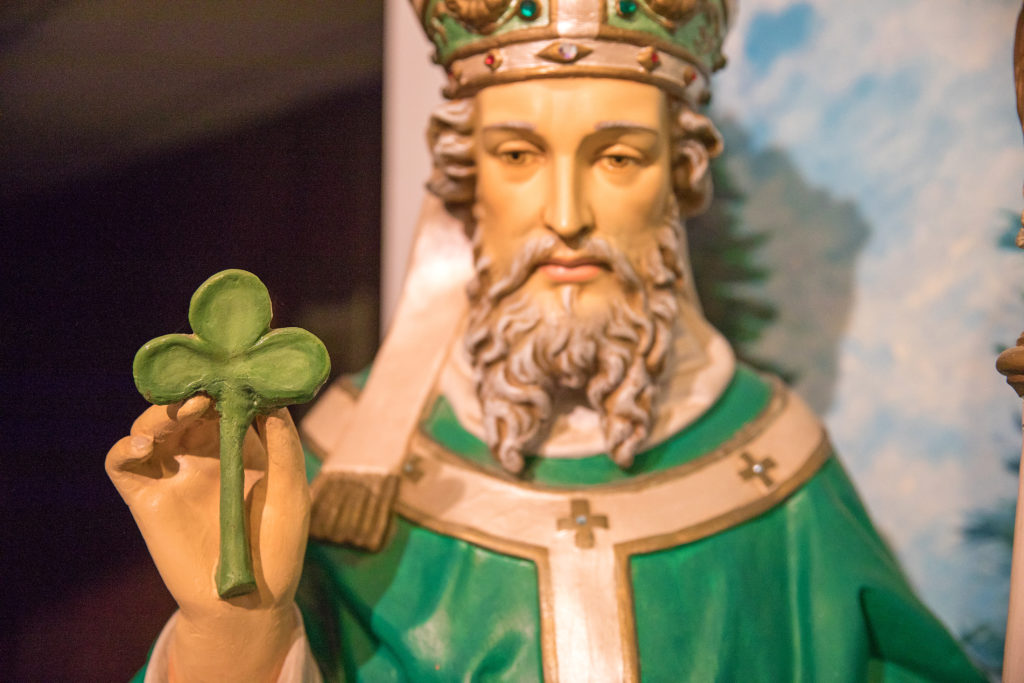
This son of illiterate Texas farmers went on to become one of the most consequential leaders in the U.S. Catholic Church in his day. And, coincidentally, like his patron St. Patrick who was abducted by pirates, Archbishop Flores’ storied life also entailed an experience of being taken hostage- he survived a nine-hour ordeal with a man who barged into his office claiming he was ready to detonate a hand grenade.
Even from the very beginning of Archbishop Flores’ episcopal ministry, people sensed he was a legend in the making. About 10,000 people attended his ordination as auxiliary bishop. Expectations were high for the 41-year-old priest from the Archdiocese of Galveston-Houston, the first Hispanic bishop of the United States. And he did not disappoint them. His episcopacy was a rite of passage not for one individual but for an entire community.
The ‘Spirit of Patrick’ lives on
Following Archbishop Flores’ death in 2017, many people reflected on his life and legacy. This includes Bishop Mark Seitz, the current bishop of El Paso, who has tried to model his own ministry as bishop after Archbishop Flores.
Bishop Seitz first met Archbishop Flores as a young priest, and he said,
He is one of the people that showed me that a bishop can be down-to-earth, loving, fun-loving, a man of the people. He never lost that touch. People just fell in love with him.”
Like St. Patrick and Archbishop Flores before him, Bishop Seitz’s ministry is characterized by his outreach to people on the peripheries. He has aid that the “Word always comes to us crucified and powerless.”
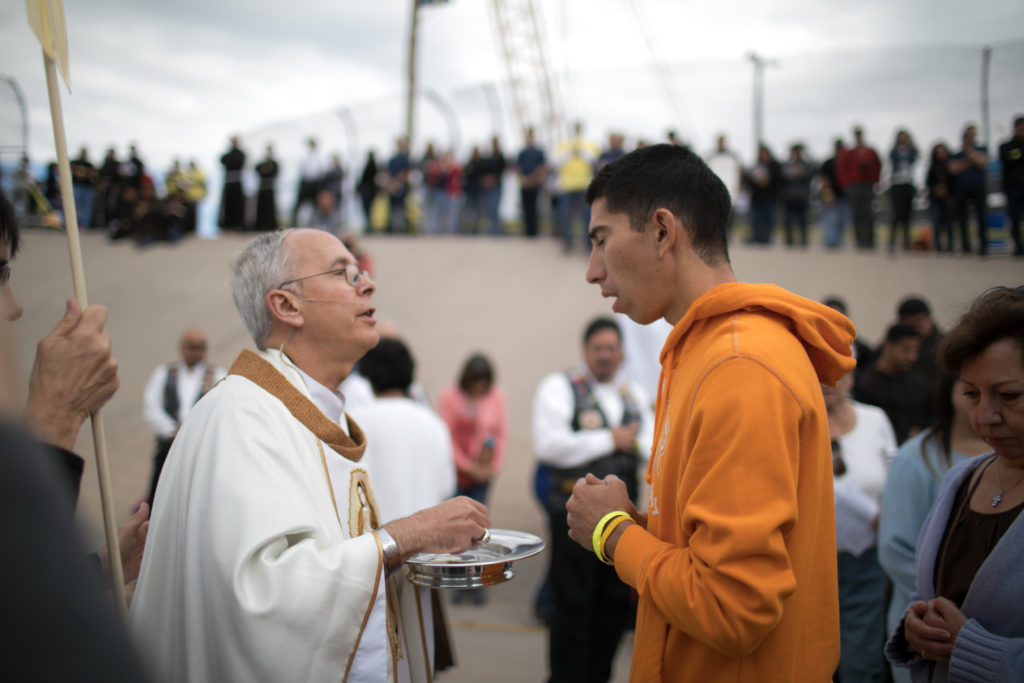
This is truly the sentiment of the spirit of St. Patrick. When Archbishop Flores was laid to rest, Archbishop Seitz commented, “I feel like we all lost a father … and more so here in El Paso because he belonged to us even if it was for a short time.”
Thankfully, in El Paso the missionary spirit of St. Patrick and the pastoral spirit of the saintly Archbishop Flores are alive and well. This is a diocese where the Catholic population continues to grow, and where the Catholic faith is as strong as their sense of hospitality and compassion for the poor.
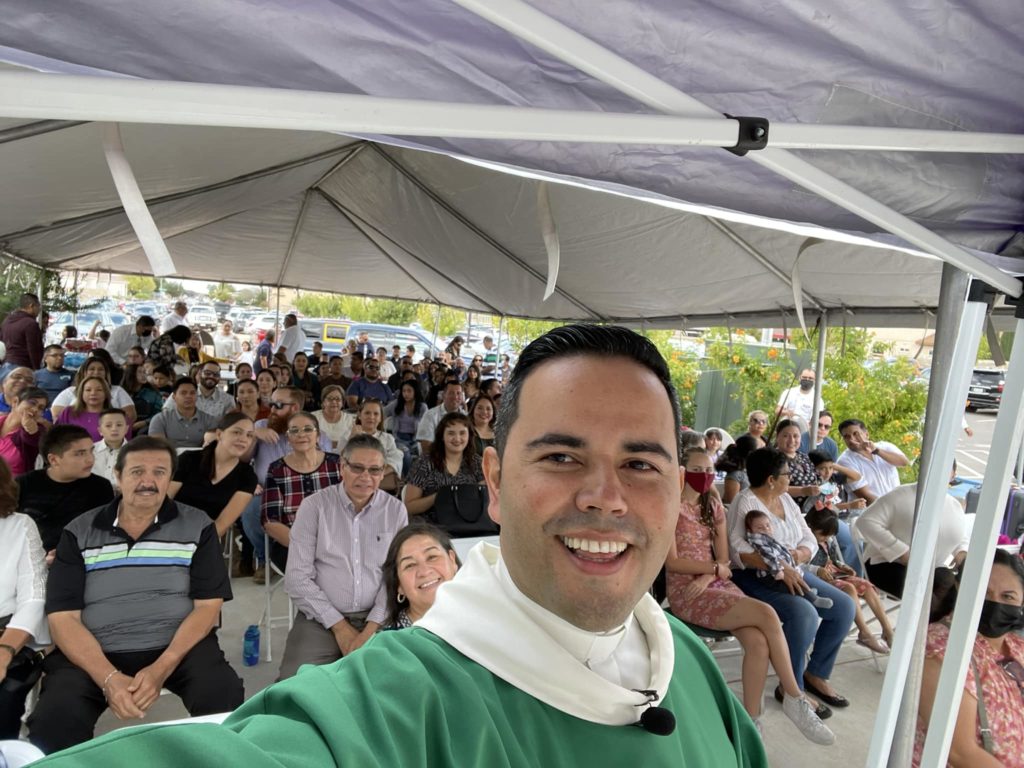
The bishop, priests, religious and lay catechists whose ministries are supported by Catholic Extension Society to this day remain in touch with the joys, sorrows, and trials of their people, especially the marginalized just as both “Patricks” would want them to be.


